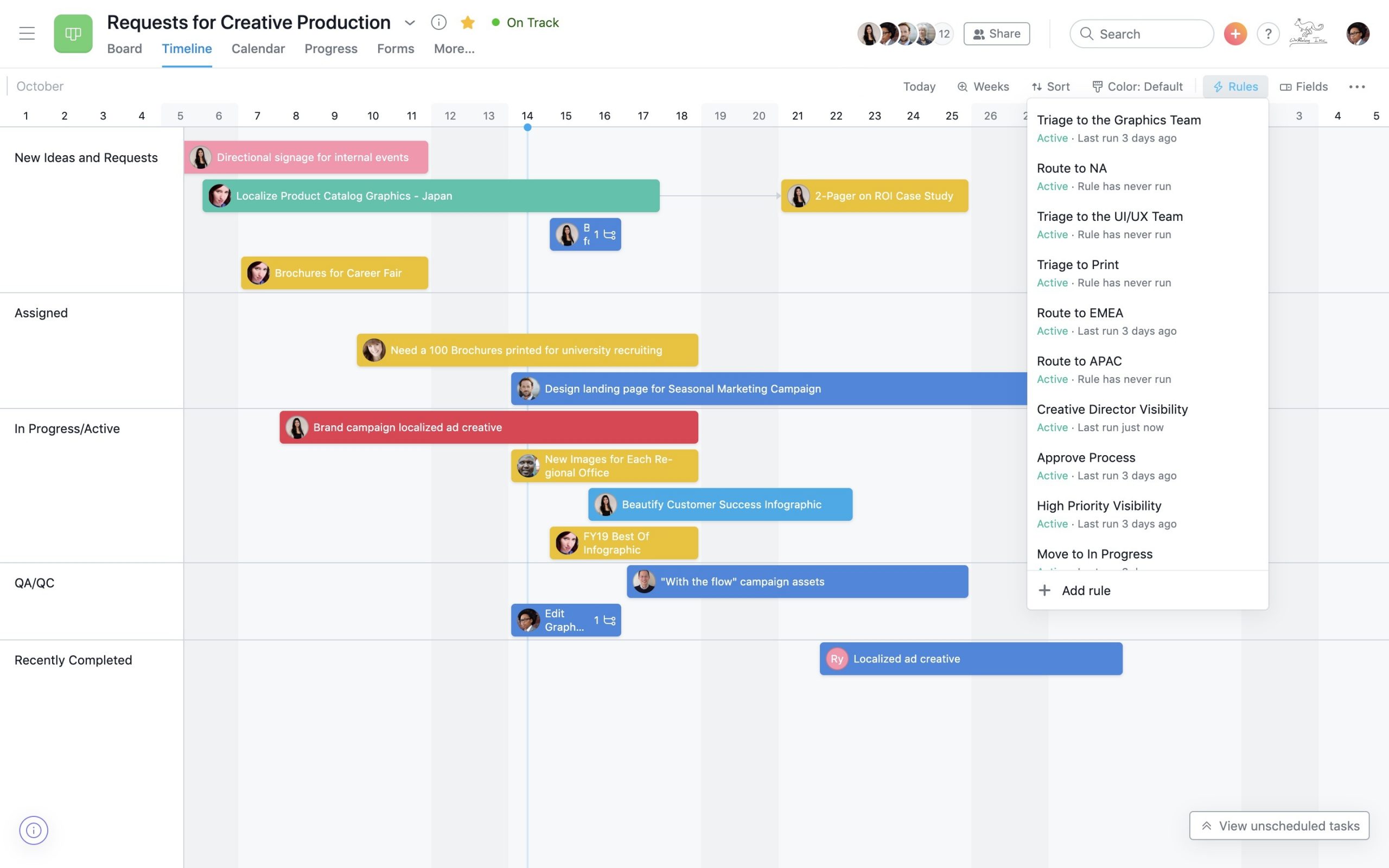
 How can you know when it is the right time to outsource?
How can you know when it is the right time to outsource?
Take the time to listen to your team and ask them these questions: What type of work is slowing you down?
The right time to outsource is when you have the unequivocal need to outsource certain tasks to a remote staffing company, and when you are certain that your revenue streams can already enable you to outsource in this way.
What type of work is not the core of your business? What is the impact of not outsourcing this work?
How much time and effort is spent performing these certain tasks? Sometimes these are questions you need to answer before it’s time to outsource.
Outsourcing remote staff should only be done when your revenues are already flowing – to a certain degree.
What is outsourcing?
Outsourcing is the practice of hiring a third party company to provide goods and services. This is a common practice with many large companies, but it can be a very effective way to save money. It’s particularly useful for smaller businesses that don’t have the resources to handle certain aspects of their operations on their
What is remote staffing?
Remote staffing is a practice of hiring employees from around the world to work from home in the U.S. or in another country.
Freelance is another form of remote staffing, but if you want an infallible workflow with employees who turn out reliably when and where you want them to, then freelance is not a viable option.
Managed Operations is ideal when you want a combination of the best of call center outsourcing and hiring local staff because of the cost efficiency of the business model.
Hire Now:

Make sure your risk income is evened out with base income, having a steady flow of revenues means you’re ready to start scaling your business through outsourcing remote staff.

Knowing what tasks you want to outsource helps you focus on your Core Functions.

Set your quotas and give precise instructions on how you want your workflows to be handled by your outsource staff.
Why should you hire remote workers?
The main reason to hire is because of the cost savings. But at first, when you aren’t ready, this area can be tricky, that’s why there are certain things you need to get out of way first prior to outsourcing.
Sometimes, the terms outsourcing, call center outsourcing and remote staffing are used interchangeably.
iSuporta is Managed Operations, the Next Gen model of outsource staffing. It contains the freedom of operational control you get from hiring local staff and the impeccable infrastructure of an Outsource Call Center.
Most business owners already know this, but many only apply what’s right for them at any given time.
During your startup, there are 2 kinds of income
- Base Income – This is where you get money either from your job, from prior businesses, from stakeholder’s or just a pile of savings that you’ve set to be your Cap Ex in running your business. If you want your small business to keep running, you must make sure that your base income is stable and you can afford to keep spending on outsourcing because you already have revenue streamings coming in, which can only grow if you outsource the right way.
- Risk income – This income may come directly from your revenues. And some businesspeople often reinvest their risk income to continue their operations. Risk income alone is not enough. Ideally, you would want to have some source of base income, or fixed and stable revenues coming in if you wish to continue funding your SME. Again, risk income alone is not a good idea to run a business, let alone, outsource unless – of course you’re already confident that your revenues from this source will keep coming in.
There are several things you must also learn to do before taking out a tab on an outsourcing company. If you want to scale your business without spending more, you need to find the right outsourcing partner.
But let’s get some things out of the way so you can take advantage of your remote staffing company and help it grow your business while still saving costs.
How to outsource? The best way to outsource is to develop a set of steps that you can follow each time you need to outsource. Here’s what I do and recommend
Outsourcing is learning how to delegate.
When you first start outsourcing, you’ll be tempted to do everything yourself, and that’s great because you want to set the tone, but eventually you need to compartmentalize the tasks you want your remote staff to do and only do the tasks that you enjoy or are better at. If you aren’t organized, you will get overwhelmed and you won’t be able to know which job functions you want to keep doing locally, and those you want your remote team to perform.
Know what you will be outsourcing.
Some of the first things to get out of the way in hiring an outsourcing company is knowing what the specialties of your remote employees are. This is why it’s a great idea to interview them yourself. You can set up a Skype interview, or you can have your remote HR do that for you and simply give them a list of pointers and specialists you want to seek.
If you prefer, we can do the shortlisting, while you, personally do the interviews via Zoom or Skype. Choose your platform.
Give instructions to your remote staff.
Before you outsource a job, you need to give instructions for that job. Your instructions must be clear and detailed. For example, I have a document that I give to my VA with instructions on how to book appointments. It details how to find the client and what times of the day to contact him. It’s important my VA only make certain phone calls during those times of the day. Or you can advise your VA to make appointments and record them on Sheets or Trello.
Perform a trial run – manage remote employees and set the tone.
A trial run gives you a chance to see if you’re giving the right instructions. It’s also a chance to test out your new tool or process. As your employees go live, it’s good to pace things and see how they fare with your workflows. If there are things that need to be changed or adjusted, we will work with you to implement those changes so that there are no longer any hitches in your outsource functions.
For example, if you’re using a new tool to create your bookkeeping spreadsheets, you’ll want your remote staff to familiarize your accounting and bookkeeping tasks and you will want them to make sure your information is being reported in the way you want it to be.
Give feedback and training.
After the trial run, you’ll want to give feedback and training. You should also have training documents or training videos that your remote staff can watch. The great thing about hiring remote staff through iSuporta is that you get Results Coaches or On Site Supervisors who can also serve as your trainers!
You can train them first, or train the whole team, and let allow them to work with the software and hardware you require so that they
Keep notes.
You should always keep notes on the remote staff you outsource to. A great way to take notes is to put them on Asana and Trello, this is a fantastic way to collaborate because you can track people’s progress on the fly.
Outsourced bookkeeping for example may require you to take note of the progress and accounts which are now reconciled or notes on the payroll systems in place to keep your employees happy. It’s important to keep notes which you can pull up right away to make sure your outsourcing processes are performed in a systematic fashion.

Ask your employees questions, address their concerns. Making sure they have a voice ensures they take ownership of your company.

Perform a trial run and see how well your employees perform. Make adjustments accordingly and request for changes if there are any necessary.
Have a system in place.
Always have a system in place to give you alerts when you need to check in on your outsourced projects. You should also have a system in place to make sure you’re giving your remote staff the feedback and training they need.
Set quotas and project milestones.
If you outsource digital marketing or sales then set a monthly quota! Have at least 5 or 10 closed deals in a given month if that’s a reasonable target! Or if you’re outsourcing accounting and bookkeeping then set a number of assets, US based employees or banks to be reconciled on your quota system.
If not, you can set a quota for a long game such as 6 months and see if there are any results on your sales funnel. It’s important to set a goal so that your remote employees will be well oriented on what to do and when to do them.
Ask questions about any concerns your remote staff have.
If you want to keep your remote employees engaged, then you must speak to their concerns. as well. The more they know you care about them, the more your staff will be motivated in doing their jobs and they are likely to care about your own KPI’s and meet your weekly requirements because they have now taken ownership of your brand.
Why not just hire in the States?
Why can’t you just hire an employee in the States? Or anywhere in the West? That’s because you may have to shell out a whole lot more on overhead costs and if you want a really good employee you may have to pay $30 per hout, that on top of overhead expenses can make your operations cumbersome.
It’s better to Outsource to the Philippines and then find an employee who matches up with the Western standards you prefer.
Of course, if you have your own arrangements through hiring exclusively in house staff, then that would be great, but if you want to save on costs, then you can turn to Managed Operations as a viable model for remote staffing.
iSuporta Managed Operations as your Outsourcing Partner
We are your office for hire. Think about us as an advanced, much safer option than freelance.
If you hire outsource employees through iSuporta, you get the office space and the equipment along with 24/7 Internet with backup generators and power ensuring the uninterrupted flow of operations!
This is something you cannot get through hiring someone at Upwork.
We make sure your employees get the job done and we are also willing to adapt in case you have specifications for software and hardware.
Full Cost Transparency
If you want more information on our pricing, check out our Virtual Assistant Pricing page for an idea of how much we charge.
You only start paying as your employees go live. We have no hidden costs.
If you’re ready to get started, it’s a matter of finding the tasks you would like us to do and setting your own workflows for us to help you with. We can also serve as an incubator for startups because of the low risk of hiring remote staff in the Philippines.
We have a low cost of living, employees who take charge of your business and who are not afraid to ask questions and showcase their talents and achieve your requests also.

